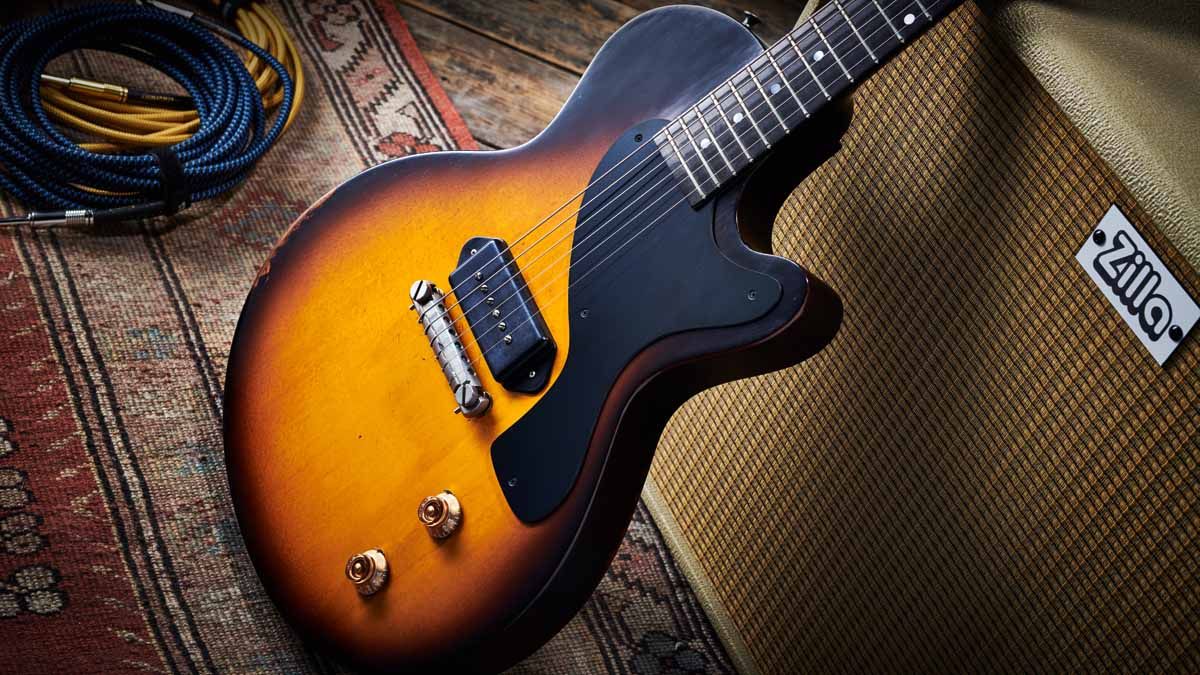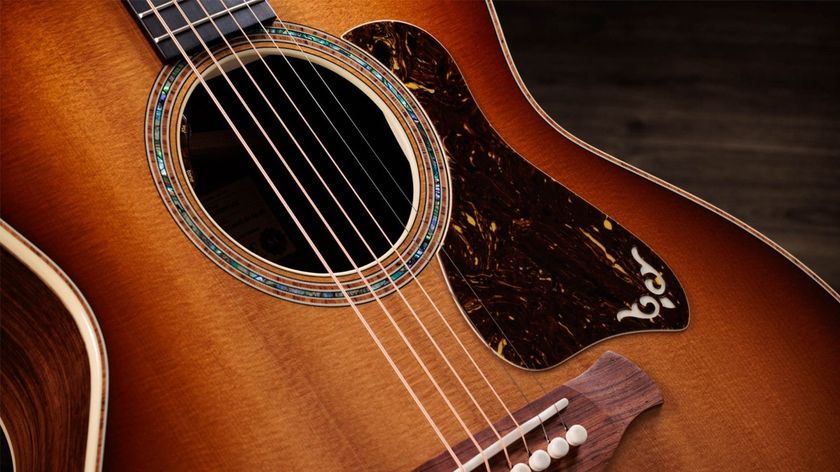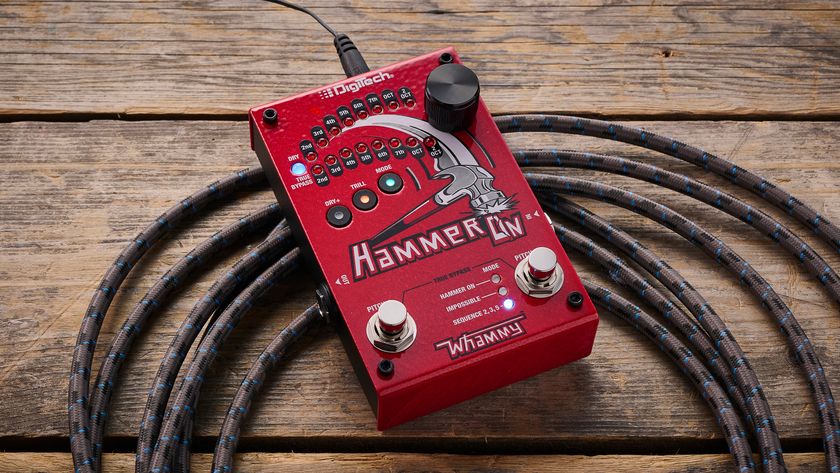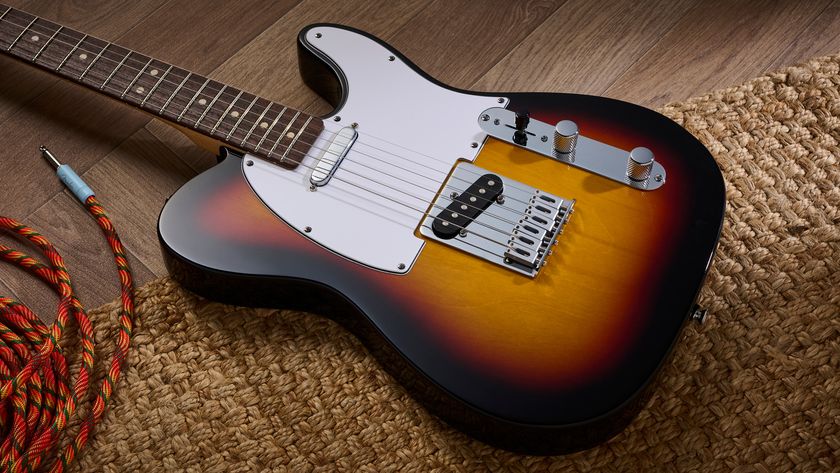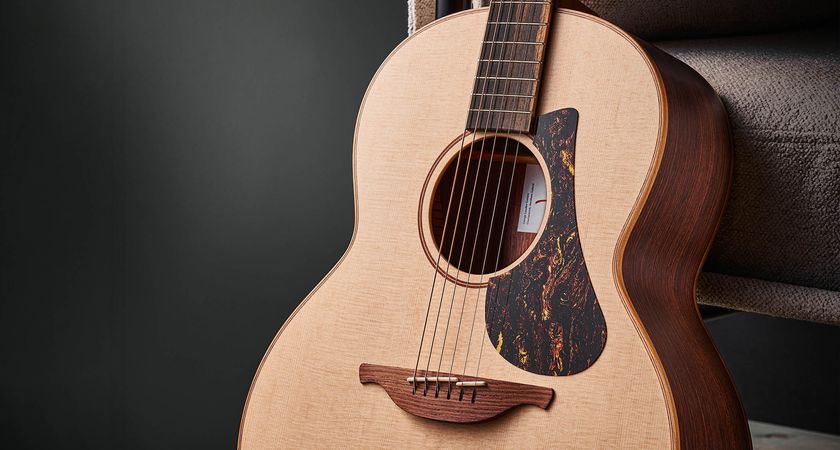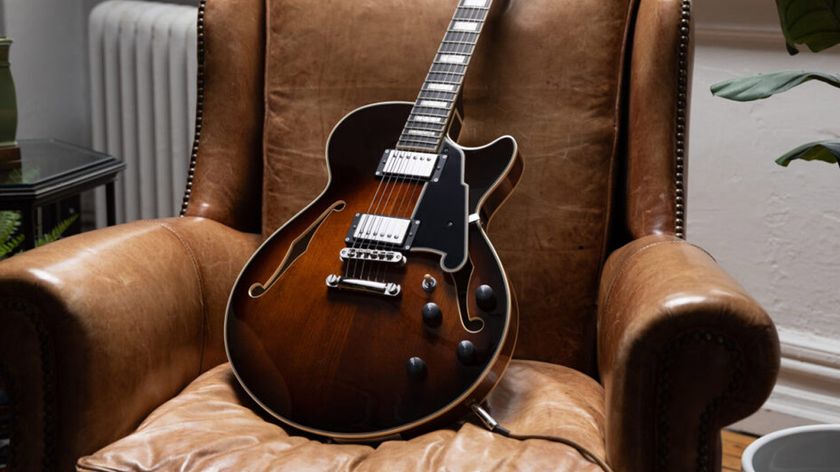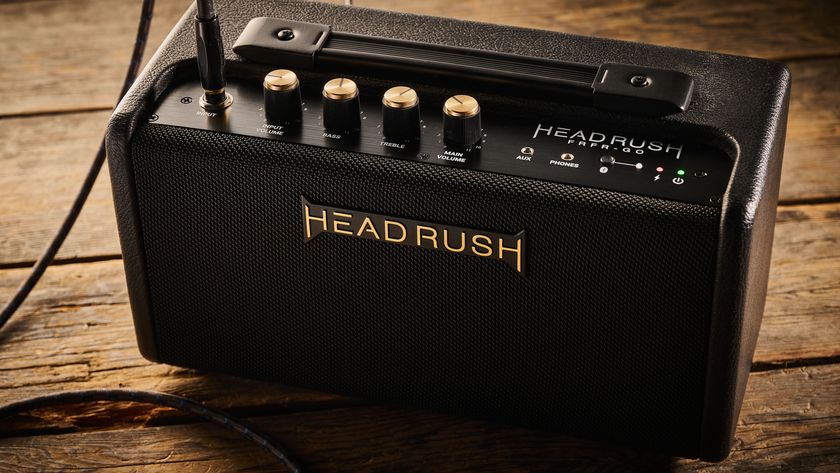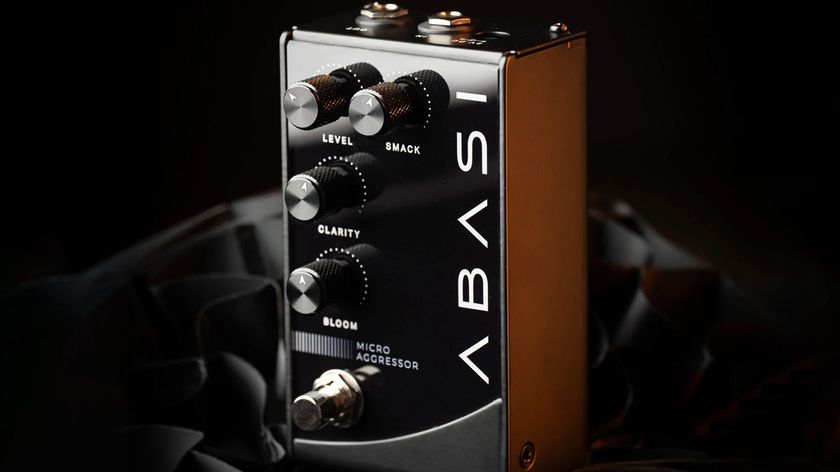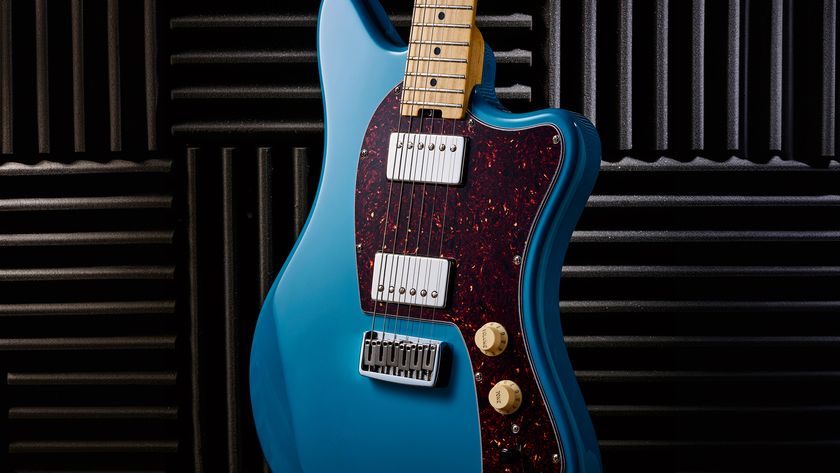Guitar World Verdict
The SB55/v nails the vibe of the Junior. Resist the urge to compare and contrast with its illustrious muse and you'll find a superbly built single-cut that similarly makes the most of a simple setup and offers great value.
Pros
- +
Authentic looks and feel.
- +
Perfect weight.
- +
Great intonation and playability.
- +
Wide ranging sounds from just the simple setup.
- +
Affordable boutique style.
Cons
- -
No lefties.
- -
Just the one colour (although it’s very good).
- -
To some, it might just be too close to the original.
You can trust Guitar World
We’re in a bit of a quandary here. Whatever your thoughts about the ethics, the SB55/v – like any Eastman we’ve played – combines obvious knowledge of the style with a build quality that’s about as far from our perception of often ‘cheap and cheerful Chinese’ as we can imagine.
Those first impressions are so important: the ‘right’ weight, a clubby handful of neck and a pretty accurate attempt at a vintage Gibson finish that looks worn with a few dings but well cared for.
Our 63-year-old Gibson original that we’re using as a comparison for this review has clearly been around the block a little more, but the SB55/v captures the vibe uncannily well, rather like a young actor who’s made up to play a much older character.
Of course, you can’t go around simply copying someone else’s design and, as with Eastman’s increasing number of Gibson-inspired electrics, the shape is different – but not enough to ruin the fun. That said the rounded horn – the major difference here – isn’t quite as classic as the Les Paul and more bulbous with it.

Depth wise, the body is slightly thinner but only by a couple of millimetres. More obviously, though, the edge radius is very small; the original’s is much bigger. In these subtle regards, then, the Eastman looks and feels marginally more rudimentary and ‘junior’ than the original design.
The SB55/v gets very close to the hallowed midrange ‘grind’ that’s definitive ‘mahogany Gibson’
63 years has also taken a toll on the materials used by contemporary guitar makers. Our ’57 original uses one-piece stock of pattern-grade South American mahogany; some call it Honduran. The fingerboard is Brazilian rosewood, which has long been out of trade.
Eastman shoots for the same one-piece stock but uses okoume, which isn’t a mahogany but is used by an increasing number of makers as a viable alternative. The fingerboard here is a blacker ebony with mild striping and what appears to be a polished face.
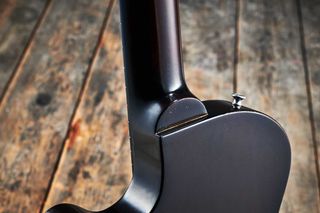
Conceived by its violin-making division, Eastman’s Antique Varnish finish is used across its instruments and is referred to as “a six-step process starting with a basecoat application to fill the grain, moving to colour application, concluding with a French polish, resulting in a finish that’s softer than lacquer, with a smoother tone”.
As we said, the colouration is excellent, not least the deep vibrant yellow of the sunburst base. It’s less glossy than our original, though, and there are none of the character-forming cracks of the original’s nitro finish.
No, the ‘wear’ here – like that on the forearm-rubbing bass-side lower bout – is far from overdone and it’s clear that the finish is very thin, sinking into the grain in many places and especially on the back, although it does look a little ‘homemade’ in places, around the heel, for example.
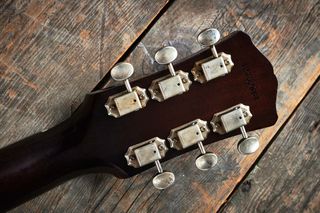
The SB55/v’s actual neck-to-body join is more like the tenon of the Les Paul proper, unlike the original Junior where there’s a ledge to the body that extends into the cutaway allowing the full width of the neck to fit into the body.
The neck rakes back noticeably more on the Eastman, too, to give a bridge height of around 17mm at the G string directly in front of the Faber bridge. The same measurement of the G string on the original is slightly lower at 15mm, but you’ll notice that the neck actually sits higher from the body face than the Eastman’s, too.
Both headstock back angles seem identical (17 degrees) while the SB55/v’s headstock is slightly thicker and untapered and has a black facing (that looks like ebony) with an inlaid pearl Eastman logo and a dark wood truss rod cover. Another similarity between the SB55/v and the original is that both use a single-action truss rod.

Like other budget Gibsons in the 1950s, the Junior’s tuners were three-on-a-strip in style with ivory-coloured plastic buttons. The Faber tuners in use here are individual and Kluson in style and like the wrapover are nicely aged, looking like upgrades someone might have performed a few decades before.
Bridges were often changed from the original’s stud tailpiece wrapover, a pretty basic design allowing only overall (not string-specific) height and intonation adjustment.
That said, the rigid bar that bolts very firmly into the body remains a very efficient design. The Faber bridge retains this aspect, but its pre-intonated ridge (inspired by PRS’s original Stop-Tail design) means intonation is more accurate.
That pre-intonated ridge also means that the bridge isn’t slanted as you’ll see on most originals: a minor point but it’s uncanny how these minimal changes alter the look. It also uses Faber’s steel Tone Lock studs that ensure the bridge doesn’t tip forward.
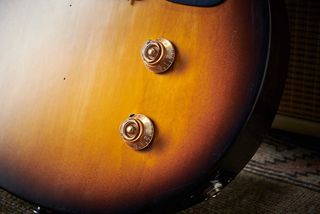
While the Bakelite plastic scratchplate apes the original (although that was made from celluloid, apparently), it is subtly different due to the altered treble horn shape, and there’s more air around the edge of the P-90’s dogear cover, which is a lot more dulled here than the glossier original.
The pickup mounts directly to the body – there’s no height adjustment save for the six cross-head polepieces.
It’s placed closer to the bridge than our ’57 original, too: the distance from the centre of the outer string poles to the break point at the bridge is 38mm (high E) and 40mm (low E) compared with the original’s 43mm and 49mm measurements.
Feel & Sounds
As we’ve observed, the SB55/v is not a vintage clone but it really does capture the essence. While neck shapes were far from identical back in the 50s, the quite clubby full C of the SB55/v is certainly many people’s idea of this period of Gibson.
It’s very close to our original in terms of depth and width but with slightly fuller shoulders; the ’57’s are very slightly V’d in lower positions.
Our original, then, has a nut width of 42.96mm with a depth of 22.4mm at the 1st fret and 25mm at the 12th. The Eastman’s nut width is 43.5mm: 22.2mm at the 1st fret and 25.4mm by the 12th.


The SB55/v also replicates the string spacing at the nut at just a hair over 36mm and the bridge, which measures 51mm. The top E sits some way into the fingerboard – like our ’57 – noticeably more than the bass side by the time you get to the 12th fret and above. Fret size is typical of a refretted original, too.
The Jescar 47104 wire here is spec’d at 2.64mm wide by 1.19mm high, which is pretty similar to the gauge of our refretted original, also giving a very different feel compared with the smaller original fretwire Gibson used back then.
There’s a lovely vibrancy here that we wouldn’t be surprised if it mellows down a little after some serious play time
So, the SB55/v has a very bend-friendly ’board and it continues the overall vibe of a ‘player’s’ Junior, one that’s been maintained and worked on over the years. Yet its acoustic voice does come across as a little ‘young’, almost trying too hard to impress us; the ’57 sounds a little more balanced with the zinging high-end sitting down a little.
Of course, what the SB55/v will sound like in 60 years’ time is anyone’s guess, but there’s a lovely vibrancy here that we wouldn’t be surprised if it mellows down a little after some serious play time.
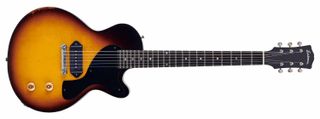
The SB55/v is simply a whole lot of fun. It gets very close to the hallowed ‘grind’, that almost vocal midrange that’s definitive ‘mahogany Gibson’.
But there’s a treble lift here that, with volume reduction, takes you into Tele-territory and could be the foundation for a great rhythm tone, balancing clarity and heft through virtually any lightly crunchy amp, or indeed Helix setup, that we tried.
And it’s balancing the strident high-end, from both the volume and tone, that’s key to any single-pickup guitar.
Yes, for punkier garage styles, just wind both full up and you’ll get the gig. But the thing about a good original Junior is that it has far more to offer – the SB55/v is right in that ballpark.
That’s where the similarities stop in this test. The ’57 sounds slightly hotter with both controls wound full up. The high-end, as we observed acoustically, is less strident, less thin, but it’s the huge depth of its voice and touch sensitivity that you really notice.
The controls seem more musical, too. Pulling back the volume very quickly cleans up a responsive amp, the tone control further shaping what you hear, and there are some beautiful cleans – almost acoustic-like – to be found that take you out of that Detroit garage to more nuanced Chicago blues.
These are not just simple volume and tone controls, though – they really are the heart of the guitar.
Of course, don’t forget that the P-90 is a single-coil pickup and will pick up hum that can often seem considerably more than, say, a Telecaster. It’s why the humbucker was invented, after all.
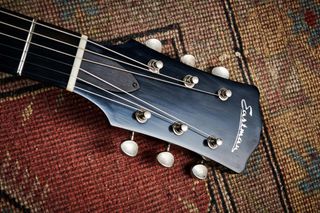
Verdict
Well, time to sum up. The case for the prosecution is simple. The SB55/v is little more than a simple copy of Gibson’s original student guitar with the wrong name on the headstock and the wrong shape.
The case for the defence is slightly stronger. Eastman isn’t the only maker using benchmark designs like this to create very functional and vibe-y modern ‘tribute’ guitars.
Remove that direct vintage comparison and you have a hugely vintage-informed piece that really gets to the heart of the Junior’s simplistic design.
Its price point is a lot lower than ‘boutique’ versions, even though the Faber hardware and Lollar single pickup are exactly what you’d find on something costing considerably more. Ultimately, does it capture the vibe and sound of the original design we directly compared it to? Yes, to the former and almost to the latter.
But remove that direct vintage comparison and you have a hugely vintage-informed piece that really gets to the heart of the Junior’s simplistic design. It’s a very well-informed tribute to a bona fide classic.
Specs
- PRICE: $1,490 / £1,239 (inc case)
- ORIGIN: China
- TYPE: Single-cutaway, single pickup solidbody
- BODY: 1-piece okoume
- NECK: 1-piece okoume, glued-in
- SCALE LENGTH: 629mm (24.75”)
- NUT/WIDTH: Bone/43.5mm
- FINGERBOARD: Ebony, pearl dot inlays, 305mm (12”) radius
- FRETS: 22, medium/jumbo (22 Jescar FW47104-P)
- HARDWARE: Faber TPWC compensated Wrap Tailpiece w/ steel posts; Faber FKT33SBR-NA Klusonstyle tuners – aged nickel
- STRING SPACING, BRIDGE: 51mm
- ELECTRICS: Lollar 50s-spec Dog Ear single coil volume and No-Load tone control
- WEIGHT (kg/lb): 3/6.6
- OPTIONS: None
- RANGE OPTIONS: The double-cut SB55DC/v is inspired by the late-’58 Les Paul Junior and comes in a red/brown Antique Varnish finish at the same price
- LEFT-HANDERS: No
- FINISH: Sunburst Antique Varnish (as reviewed)
- CONTACT: Eastman Guitars

Dave Burrluck is one of the world’s most experienced guitar journalists, who started writing back in the '80s for International Musician and Recording World, co-founded The Guitar Magazine and has been the Gear Reviews Editor of Guitarist magazine for the past two decades. Along the way, Dave has been the sole author of The PRS Guitar Book and The Player's Guide to Guitar Maintenance as well as contributing to numerous other books on the electric guitar. Dave is an active gigging and recording musician and still finds time to make, repair and mod guitars, not least for Guitarist’s The Mod Squad.
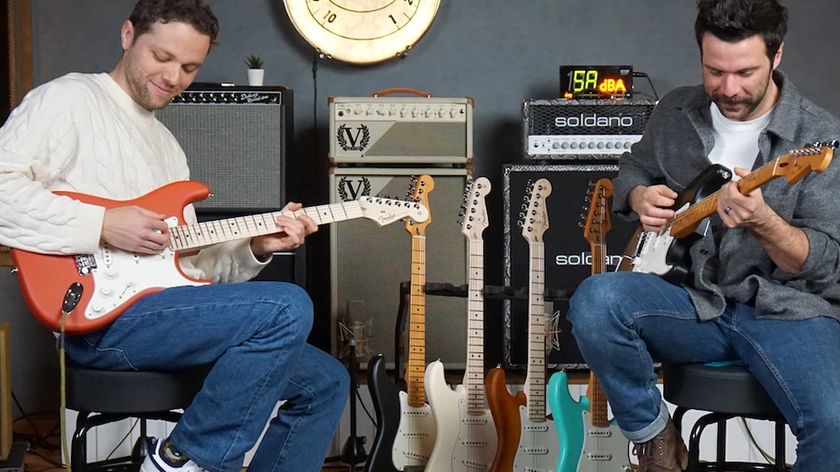
“Satin Stratocaster dreams”: Fender and Thomann have produced two new exclusive Stratocaster lines – and their prices rival existing US and Mexico-made models
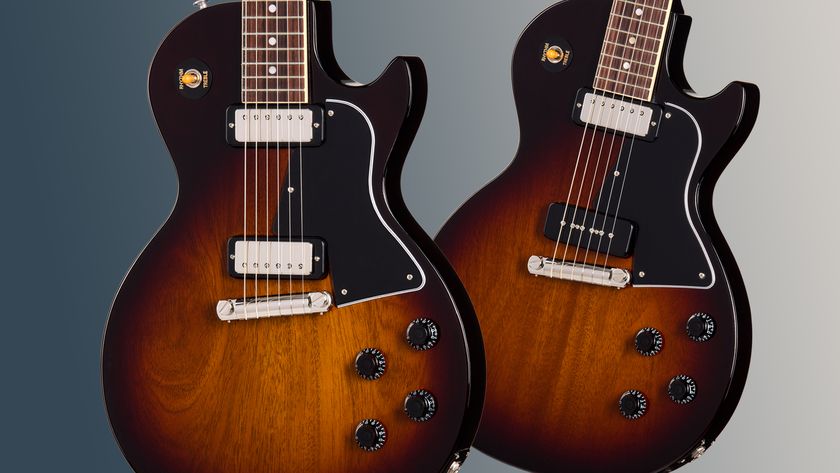
“A new take on the classic”: Gibson gives its Les Paul Special an ultra-rare pickup overhaul with new Mini Humbucker models
